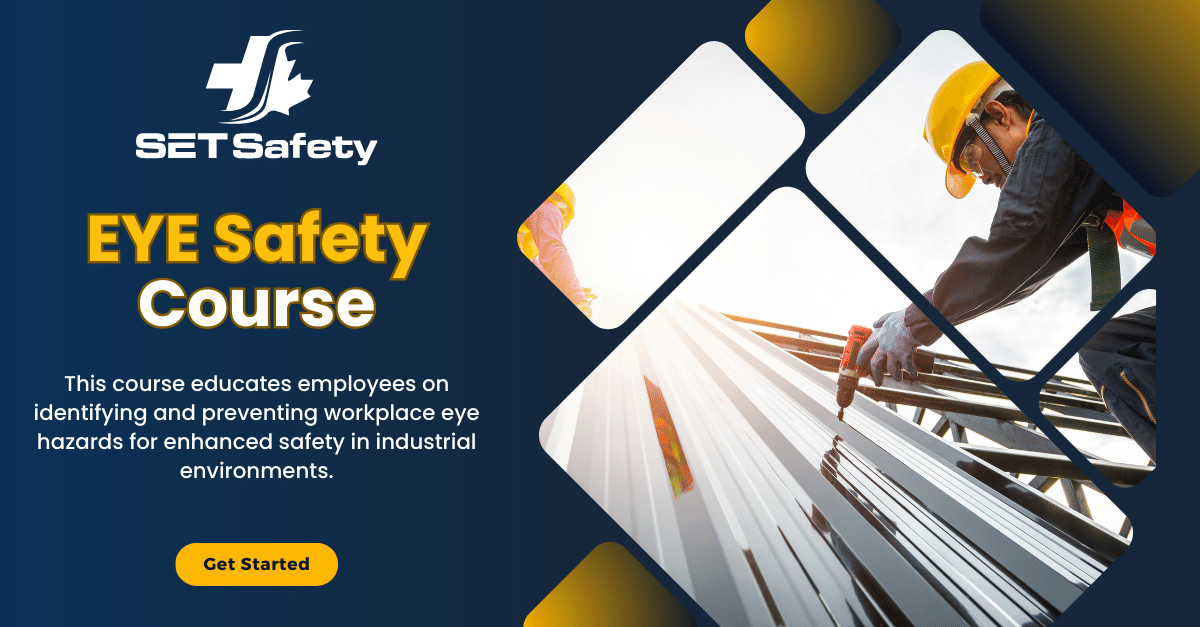Eye protection – PPE
 Employee engagement is a huge factor in workplace PPE (Personal Protective Equipment) compliance and this ties heavily to the Safety Culture of the organization. Simply put, rules and regulations are not enough to ensure that your workforce is compliant with PPE.
Employee engagement is a huge factor in workplace PPE (Personal Protective Equipment) compliance and this ties heavily to the Safety Culture of the organization. Simply put, rules and regulations are not enough to ensure that your workforce is compliant with PPE.
Eye protection can be the most challenging PPE category for companies. Some common complaints with safety eyewear may include:
- Workers not thinking the PPE was necessary,
- The PPE provided was uncomfortable, a poor fit, or unattractive.
Strategies that can be implemented to encourage greater PPE compliance can include:
- Improving existing education and training programs
- Increased monitoring of employees by management and peers
- Purchasing more comfortable and stylish PPE
The selection of appropriate eye protection includes completing a hazard assessment, reviewing available CSA-approved safety glasses for those hazards and finding the right style based on protection, comfort and aesthetics.
Employee compliance with safety glasses is at its highest when the eyewear is comfortable across the range of temperature, humidity and the work activities being completed. Some key indicators of wearer comfort are if they are wearing the safety glasses consistently; how often do they need to make adjustments to the glasses; and are they having to take them off for some parts of the job or task.
Understandably many organizations have budget restraints, but the cost of safety eyewear needs to be considered over the lifespan of the eyewear. Some of the common issues faced with cost effective eyewear can be:
- Lenses scratch easily
- Poor lens clarity and distortion
- Fogging
- Temple discomfort
While some eyewear may be cost effective, if the lifespan of the eyewear is not very long and if your workforce is reporting eye injuries due to eyewear non-compliance, you may be spending more in the long run. Believe it or not, aesthetics matter. Manufacturers recognize this and now offer a full range of stylish, fashionable, high performance safety eyewear.
Eye Protection Safety Training Courses:
- Eye Safety (MARCOM)
- PPE – Eye and Face Protection
- Eye Safety in Construction Environments
- Emergency Eyewash & Shower Use
- Head, Eye, & Face Protection: PPE Employee Essentials
- Personal Protective Equipment (Bundle)
*This blog and related-information has been kindly provided by Desiree Vreim with Brasco Safety Inc. and does not necessarily imply any views and opinions of SET Safety. SET Safety and/ or the author is not responsible for the accuracy or validity of this information. SET Safety and/or the author does not accept liability for the reliability, accuracy or completeness of the information presented. This article does not substitute legal, jurisdictional or professional advice. The reader bears all responsibility to seek professional guidance or advice on any information noted in this blog or related to the content of this blog.

